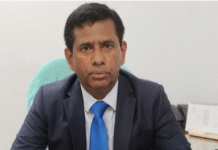
Although four years have elapsed since the devastating cyclone Aila bore down the country’s coastal belt, majority of the affected people are still facing severe crisis of safe drinking water.
Besides, many people have been living in embankments or makeshift shelters as they could not return to their houses due to perennial waterlogging triggered by the super cyclone or for lack of money to rebuild their damaged houses.
Although the government and non-governmental organisations (NGOs) took a number of measures to address the drinking water crisis, most of the people of the coastal region still do not have access to sufficient quantity of safe drinking water as their resources, including ponds, were badly damaged by Aila.
Most of the rivers, canals, ponds and wetlands in the coastal belt, particularly Dakope and Koira upazilas in Khulna district, and Shyamnagar upazila in Satkhira district, were heavily exposed to salinity intrusion after the cyclone.
Gabura Union Parishad Chairman M Masudur Rahman said most of the people of his locality have to drink almost saline water to save their lives.
In most places, people fail to get safe water through tube-wells due to the presence of high salinity in the shallow and deep aquifers.
Ponds with pond sand filters (PSFs) and rainwater harvesting in households are now the major sources of safe drinking water in the areas.
Most of the villagers in remote areas have to fetch sweet water from far away places where there is any sweet water pond.
Gabura and Padmapukur unions of Shyamnagar upazila and Pratabnagar union of Ashashuni upazila in Satkhira district were badly hit by the Aila, killing at least 55 people and injuring several hundred.
On the other hand, all unions of Koira upazila, Sutarkhali and Kamarkhula unions of Dakope upazila in Khulna district were badly ravaged by cyclone Aila.
Contacted, local MP HM Golam Reza said most of the trees and various types of sweet water fishes have already been damaged in the Aila-ravaged areas due to the intrusion of saline water, rendering many jobless.
He said there are 29,000 bighas of abandoned land and 160,000 bighas of khas land where shrimp is being cultivated. The government earned revenue to the tune of only Tk 1.49 lakh in 2010 and Tk 5 lakh in last year.
“The problem won’t be resolved unless the government takes initiative to remove salt water stopping the shrimp cultivation in enclosures,” Reza said.
Besides, many people still have to live in embankments as they could not rebuild their houses for lack of money, said UP chairman Masud.
He said people became unemployed as they cannot cultivate their land due to excessive salinity, and fishing due to the destruction of sweet water fish.
The UP chairman said people of the coastal belt had been depending on the Sundarbans for their livelihood. But after the cyclone Aila, pirates and forest dacoits have created a reign of terror inside the world’s largest mangrove forest. “Now, many people dare not to go to the forest to avoid kidnapping and extortion, forcing them to migrate to other places for their livelihood.”
Koira Upazila Nirbahi Officer Md Shamim Hasan said the government has taken various projects to remove sufferings of the Aila-hit people.
“The projects are being implemented in phases,” he said, hoping that Aila-affected homeless people will be rehabilitated soon.
At least 193 people were killed, 2.43 lakh houses were fully damaged and Aman crops on 97,000 acres land were fully damaged in the devastating Cyclone Aila that lashed the coastal belt on May 25, 2009.
Source: UNB Connect









